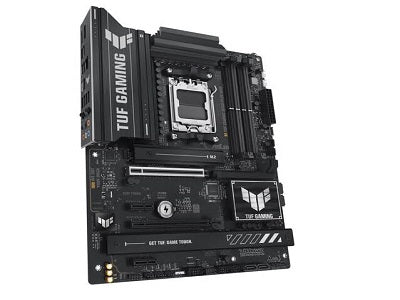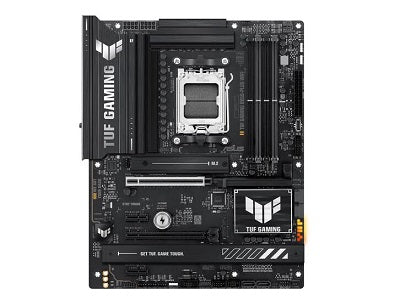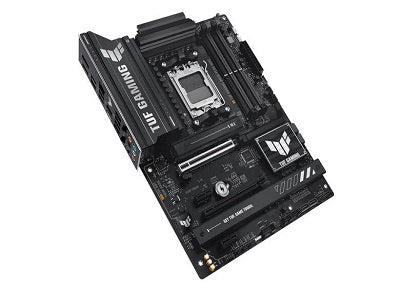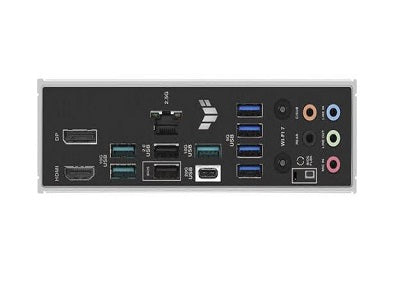ASUS TUF GAMING B850-PLUS WIFI
ASUS TUF GAMING B850-PLUS WIFI
Couldn't load pickup availability
The Underrated Workhorse: ASUS TUF GAMING B850-PLUS WIFI
The ASUS TUF GAMING B850-PLUS WIFI is the ultimate motherboard for any serious AMD builder who wants top-tier features without the flagship price tag. This board is built with military-grade components for rock-solid stability and supports the latest Ryzen CPUs. It’s fully future-proof with a PCIe 5.0 graphics slot, multiple PCIe 4.0 M.2 slots, and ultra-fast Wi-Fi 7 and 2.5Gb Ethernet. It's the perfect, durable foundation for a high-performance gaming rig.
⭐ Highlights
⭐ Highlights
TUF Military-Grade Components | 14+2+1 (80A) VRM Power Stages | PCIe 5.0 x16 and M.2 Slot | Rear USB 20Gbps Type-C | Wi-Fi 7 and 2.5Gb Ethernet
⚙️ Specifications
⚙️ Specifications
Motherboard Socket Type: AM5 (Supports AMD Ryzen 9000/8000/7000 Series)
Motherboard Chipset: AMD B850
Motherboard Form Factor: ATX (30.5 cm x 24.4 cm / 12.0 x 9.6 inches)
Motherboard RAM Type Speed: DDR5-8000+ (OC)
Motherboard RAM Slots: 4 x DIMM Slots
Motherboard Max RAM Capacity: 256 GB
Motherboard PCIe Slot Primary: 1 x PCIe 5.0 x16
Motherboard M.2 Slots: 3 x M.2 Slots (1 x PCIe 5.0 x4, 2 x PCIe 4.0 x4)
Motherboard SATA Ports: 4 x SATA 6Gb/s Ports
Motherboard Rear USB Ports: 1 x USB 20Gbps Type-C, 3 x USB 10Gbps Type-A, 4 x USB 5Gbps Type-A, 2 x USB 2.0
Motherboard Networking: Wi-Fi 7, Bluetooth 5.4, 2.5 Gigabit Ethernet (2.5GbE)
Share
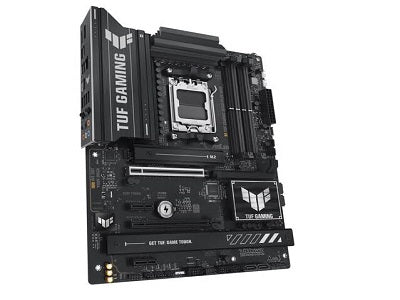
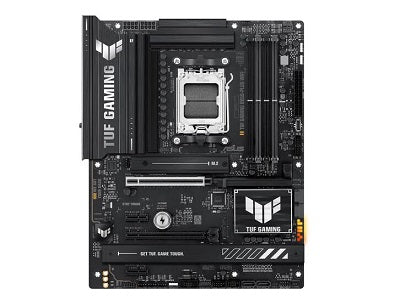
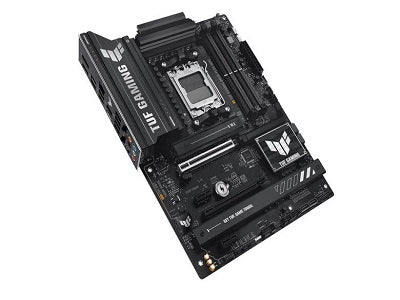
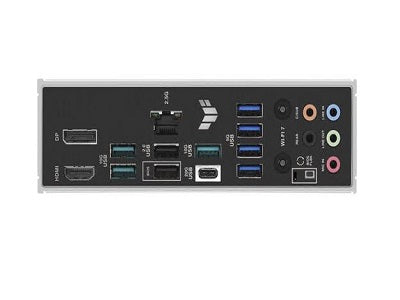
The POST-Check Protocol
-
Standoff Installation
Action: Must ensure metal standoffs are installed in the case for every screw hole on the motherboard and only those holes. Why: Standoffs lift the motherboard away from the metal case, preventing a fatal electrical short that will destroy the board when powered on.
-
The I/O Shield
Action: If your motherboard doesn't have an integrated I/O shield, install the separate shield into the case before mounting the motherboard. Why: Forgetting the shield means you must unscrew and remove the entire motherboard later, which is a massive waste of time.
-
Pre-Install Components
Action: For ease of assembly, install the CPU, CPU Cooler mounting brackets, RAM, and M.2 SSDs onto the motherboard before placing it in the case. Why: Working outside the case avoids cramped spaces and makes critical installations (like the CPU cooler backplate) far simpler.
-
Front Panel Headers
Action: Consult the motherboard manual and use the tiny front panel connectors (for Power/Reset buttons and LEDs) before installing the GPU, or buy a front panel header block to connect them as one piece. Why: These tiny pins are difficult to access once the large GPU is in place, and incorrect wiring means your power button won't work.
-
The Power Duo
Action: Ensure both the large 24-pin ATX power cable and the 8-pin (or 4+4 pin) CPU power cable are firmly clicked into the motherboard. Why: The 24-pin powers the board, but the 8-pin is the dedicated line for the CPU; skipping the latter means the system will not boot.
-
RAM Seating
Action: Press the RAM sticks firmly into the correct dual-channel slots (check the manual for slot numbering, usually A2/B2) until the latches at both ends click securely. Why: Improperly seated RAM is the most frequent cause of a new PC failing to POST (power on self-test).

